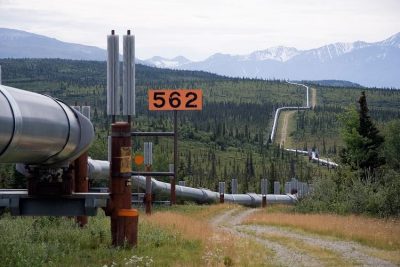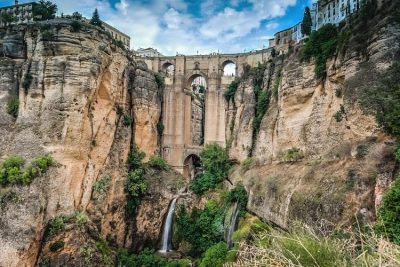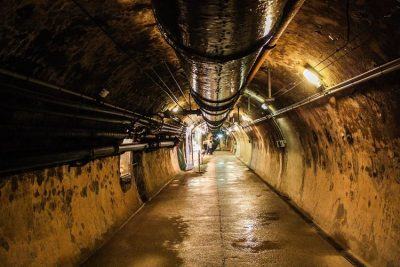National Highway 44: The Longest National Highway of India from Srinagar to Kanyakumari
Share

Map of the National Highway 44 in red. (© OpenStreetMap contributors / CC BY-SA)
The National Highway Authority of India (NHAI), established in 1988, was a quiet government department till 1995. Atal Bihari Vajpayee, the- then Prime Minister of India, charged it with his dream project. He wanted India’s primary highway roads enhanced and upgraded. National Highway 44, the longest-running National Highway (NH), part of the 4000 KM North-South Corridor was part of his vision transformed to reality by 2012. And NHAI woke up to a vibrancy that continues even today. The way through was riddled with ups and downs.
Highly criticised road project
Noted journalist Tavleen Singh had harsh opinions about the National Highways Development Project (NHDP). In her article titled ‘Atal Bihari Vajpayee’s dream highway project is a nightmare for taxpayers’, she said Indians were being taken for a ride. That instead of going for expressways, which were need of the hour, the government was going for highways, that too by repairing and conjoining existing old roads. If we squander our limited resources in such patch up work, she argued, how shall we build expressways? It is pertinent to state that expressways cater only to high speed (average 100Kmph) automated vehicles and don’t pass through towns and villages. Highways in India, on the other hand, can barely sustain an average speed of 60Kmph as these brush through towns and villages and must accommodate traffic therefrom.
Highways- vital for the health of the economy
But India being a developing nation, its development plans couldn’t be a photocopy of other nations. Vajpayee knew it only too well and went ahead despite nay-sayers. In the fifty years before him, the road network in the country grew at an abysmally slow speed. Whereas the traffic increased 25 times, roadways grew only 8 times. For the past 2 decades, there was a pressing need to streamline roadways to up the status of the Indian economy.
Modernisation of Indian roads was long overdue. A lion’s share of India’s GDP, 5.5 percent, comes from the transport sector. Eighty percent of goods and the same percentage of people move by roads. Mustering funds and acquiring land for highways was a difficult task. Yet, in a couple of years, 5,400 km of new highways were built, sending clear signals that Vajpayee meant business. His 3 major projects, North-South corridor (NH44), East-West Corridor and the much-publicized Golden Quadrilateral (a highway ring connecting Delhi, Mumbai, Chennai and Kolkata) proved to be a thumping success.
National Highway 44 is the longest merged highway of India
National Highway 44, covering North-South corridor of NHDP, is a 3745 Km stretch. It extends from Srinagar to Kanyakumari and is a fusion of several old highways. Old roads which have gone into its making are NH-1A. (Srinagar), NH-1 (Punjab-Delhi), partly NH-2 (Delhi-Agra), NH-3 (Agra-Gwalior), NH-75 and NH-26 (Jhansi), and NH-7 (via Nagpur, Hyderabad, Bangalore, Madurai, and Tirunelveli). The NH-44 passes through 11 Indian states. An 82 Km length of NH-44 lying between Bengaluru and Krishnagiri is considered a part of the Golden Quadrilateral.
Highways numbered to facilitate navigation
The government of India undertook a major task in 2010 to rationalize numbers allocated to highways. The idea was to make numbers indicative of the geographic location of a particular highway. Going by that assumption, even numbers were assigned to all North-South highways and odd numbers to all East-West highways. For North-South highways, numbers increase as we move from East to West. Thus NH-4 is more towards East of India and NH-44 more to the West. Likewise, for the East-West highways, the numbers increase from North to South; NH-1 is more towards North and NH83, towards South.
Another rule is that all major highways would either be a single-digit or double-digit. Three-digit numbers are reserved for secondary roads or the arterial branches of the main highway. For example, roads branching off from NH-44 would be named as 144, 244, 344 etc. Regarding their approximate geographical location, 144 would be located more towards the north, and 944 more towards the south (1 and 9 both being odd, are assigned to North-South highways as mentioned earlier). Another norm is to suffix A, B, C, D, etc. This is \to indicate further branching of secondary routes. Like, 527A and 966B.
The highway witnessed some national tragedies
A symbol of resurgent India, NH-44 has made news for the wrong reasons too. Rape and murder of Disha, a Veterinary Doctor, in Telangana recently. Her 4 rapists were killed in a police encounter on the same spot close to NH-44, where the lady was raped. The year 2015- 16 saw terror attacks on the security personnel on the J&K highway, claiming 15 lives. Then, in 2003, the murder of Satyendra Dubey made headlines. The young IES officer blew the whistle on some corrupt practices going on in NHAI. He was shot dead, presumably by the road construction mafia. His death forced the Government of India to enact ‘whistleblower protection bill’ to safeguard professionals who expose corruption in their work area.
Vajpayee’s vision is still making waves
The present-day Modi government has taken Vajpayee’s dream to the next higher level, to expressways. Delhi-Meerut, Delhi-Mumbai, Mumbai-Nagpur and Bangalore-Chennai and many other expressways are in the pipeline. Road construction work is being completed at a faster rate. In 2014, roads built per day were a meagre 7 Kilometres. For the year 2017-18, the figure rose to 28 kilometres. The target set to be achieved is 45. A total of 416 projects, worth 3.26 lakh crores are expected to be completed by 2020.
Enjoyed this article? Also, check out “Pan-American Highway: The Longest Road in the World Measuring About 30,000 Kilometres“.
Fact Analysis:
STSTW Media strives to deliver accurate information through careful research. However, things can go wrong. If you find the above article inaccurate or biased, please let us know at [email protected]













